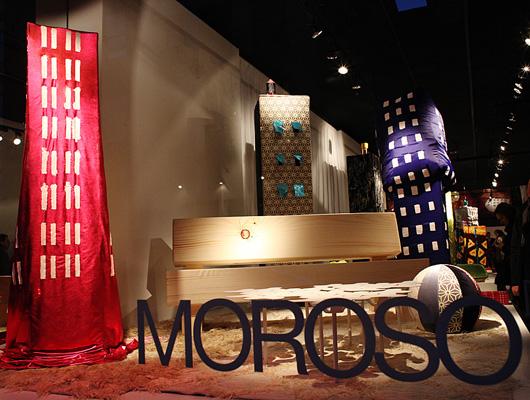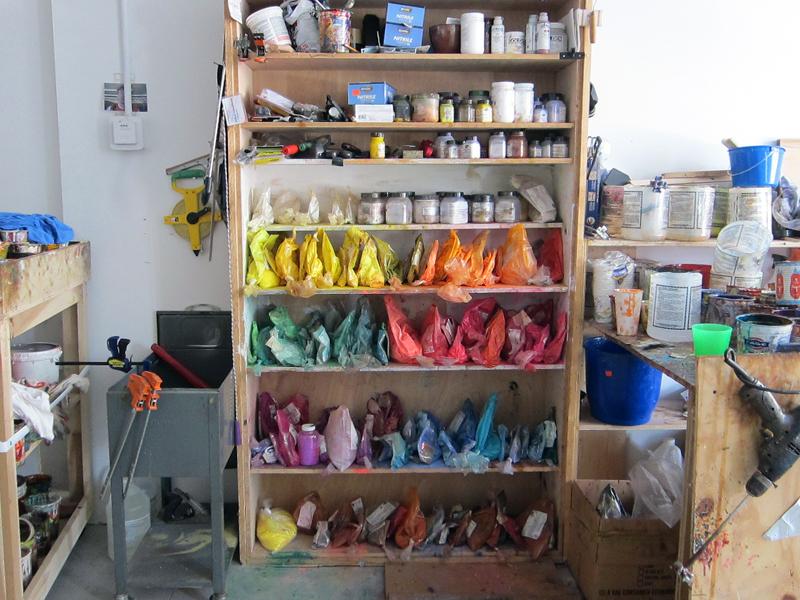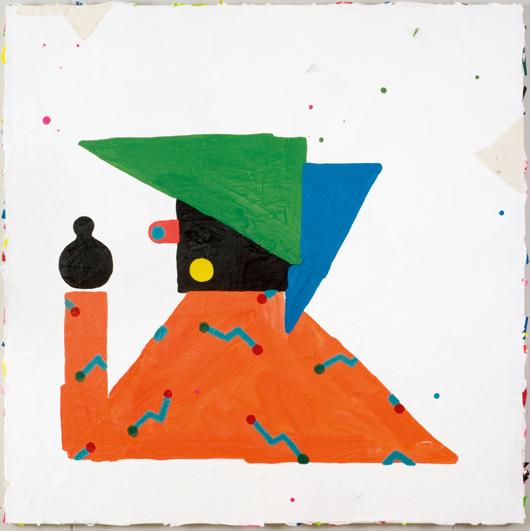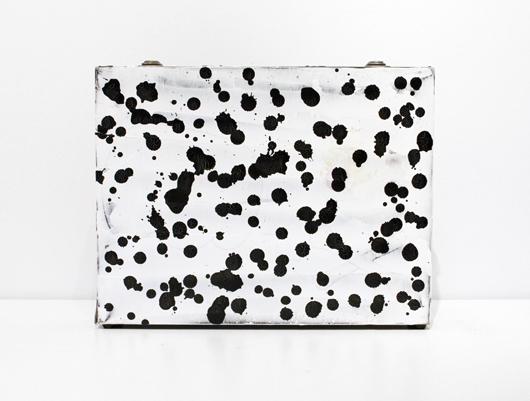
10.08.12
Q+A
With Eric Timothy Carlson, Artist
Certain people, whenever they mention an artist or a designer or an exhibition you’ve never heard of, make your ears automatically prick up — some might call them tastemakers, we suppose, though that word sounds too jargony to our ears. Regardless, we here at Sight Unseen like to believe that maybe, just maybe, we fulfill that type of role for even just a few of our more devoted followers — and of course we have our own hallowed sources of information, like Kristin Dickson of Iko Iko and Patrick Parrish of Mondo Cane/Mondo Blogo, both of whom have a knack for sending us into a flurry of OMGs. When Parrish announced he was mounting a fall show of art by Eric Timothy Carlson, whose name we only barely recognized from a collaboration with our friends at ROLU, our first thought was, “We need to interview this man!” Our second was, “But we know nothing about him,” and so in the spirit of discovery, we devised a series of top-five lists by which Carlson might introduce himself and his Memphis-inflected work to both us and our readers. Check out his incredibly detailed responses here, then rush over to see Building Something: Tearing it Down at Mondo before it closes this Wednesday. Top image: Brush Box, Infinite Fields, 2012
Please name:
Five things a stranger seeing your work for the first time might be interested in knowing about Eric Timothy Carlson.
1. Born in 1984 in Walnut Creek, CA. Raised in a town of 2000 people in rural Minnesota.
2. I moved to New York a year ago this October from Minneapolis, Minnesota, with my partner Annie Larson.
3. Collaborators of note: Aaron Anderson, Crystal Quinn, Annie Larson, Marijuana Deathsquads, Peter Burr, and ROLU
4. When I was 13 I asked a Ouija board what I would grow up to be, and it spelled out H I G H R A N K I N G N A V A L O F F I C E R W E L L K N O W N A R T I S T. Belief in the unknown and the modest ambitions of a teenager aside, I appreciate dual paths presented by the memory.
5. I have perfect vision.
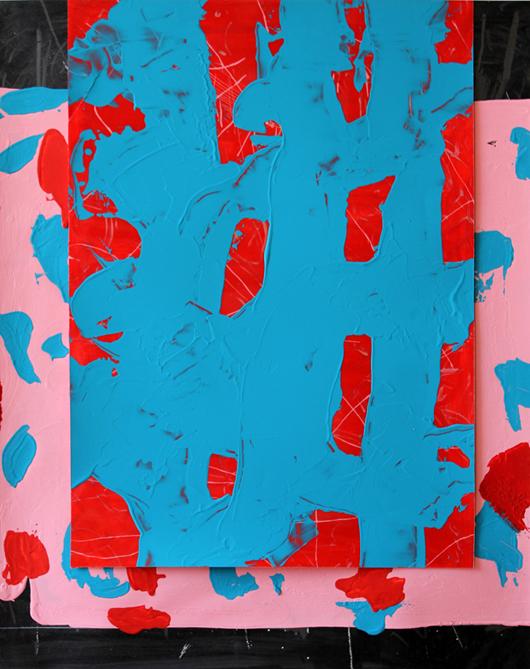
–RIF RAF– Neon Genesis, Angel Attack. Episode #1, 2011
Five differences between New York and Minneapolis that you found inspiring in your first year here.
1. Making the transition from Minneapolis to New York proved a rather solitary experience. I had a few people here, but I’ve been working in a home studio deep in Bushwick, and I’ve ended up spending a lot of my time there, following the process. In the past I’ve been heavily involved with ongoing collaborations, and though that practice continues, the distance presented a new phase. It was good thing to have come about. Transition is powerful, and I like to work.
2. Exploring the city is an obvious wonder, but I love it. I’m trying to keep my wide eyes. Biking around Brooklyn and Queens and walking the city has been a constant inspiration. There’s an endless weirdness and a deep history of experience to draw from.
3. I’m fascinated by the way people live here — where they live, negotiating a living space, or how they arrived in their situations: small spaces, illegal apartments, DIY venues, the momentary glance through street- and train-level windows.
4. The amount and diversity of people to interact with here is inspiring. I’ve had the the chance to meet a number of people that I really respect, and you have the opportunity to step out of your niche and catch dinner with neuroscientist if you need to.
5. Endless art.
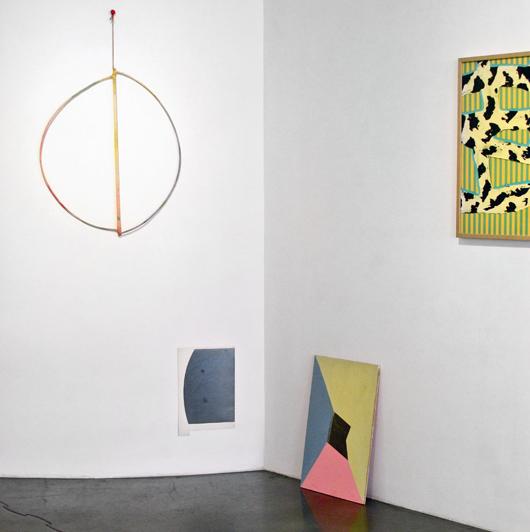 Installation view, Mondo Cane
Installation view, Mondo Cane
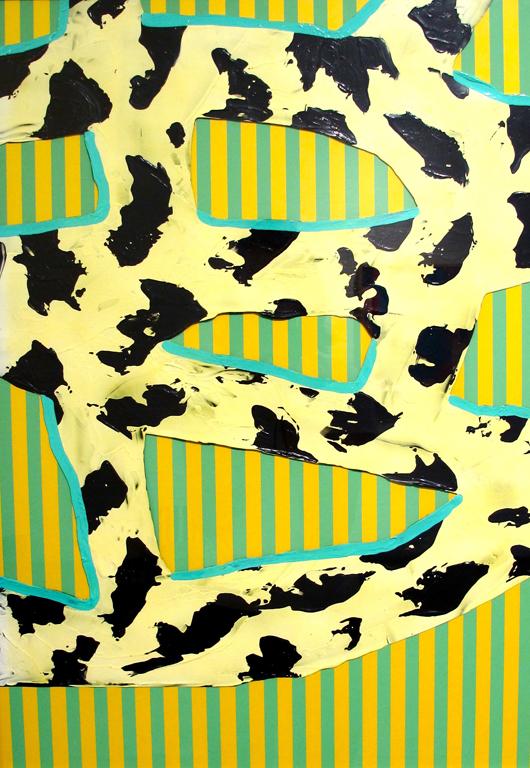 Pebb’s Red Eyes: Bam Bam Kitchen Window, 2012
Pebb’s Red Eyes: Bam Bam Kitchen Window, 2012
Five artistic techniques you used for the works in the Mondo show, and what you did with them and/or how they fit into your practice.
1. Rope is a line, and upon arrangement, the object turns to pattern.
2. Much of the work comes from a practice of a drawing frequently leaving the page; considering objects as surface and line, as components of a composition in space; and allowing context and material to inform my decisions.
3. I like the spirit of jazz, and the tricks our eyes play on us. I think of human mark-making and human mechanics effecting a visual output: drawing, stacking, organizing, the arc of the wrist/elbow/shoulder, the stride, the gesture, the knot.
4. I naturally in effect consider the opposite: the manufactured gesture, and presenting a material or creating an image that denies the effect of hand.
5. I am open to what presents itself and am willing to follow inspiration.
(6. Wordplay yalpdroW)
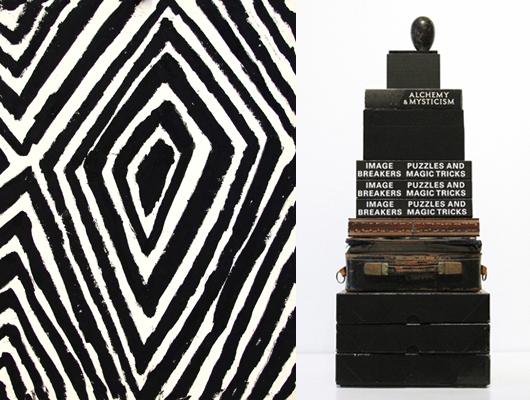 Left: Diamonds, 2011. Right: All Tower, 2012.
Left: Diamonds, 2011. Right: All Tower, 2012.
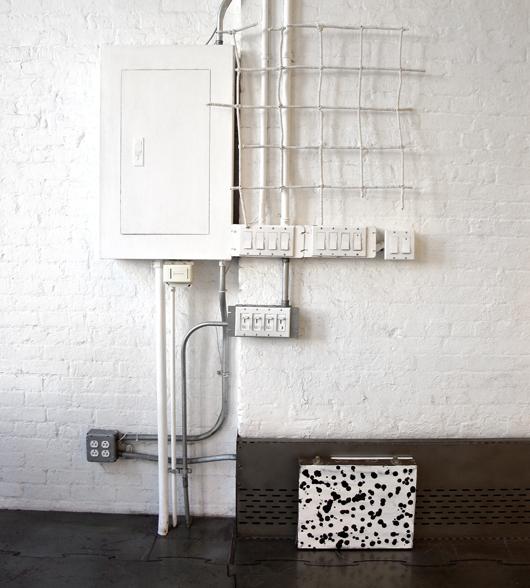 Installation view, Mondo Cane
Installation view, Mondo Cane
Five of the “discarded objects” you sourced in NYC for the show, and tell us the story of how you found each one and what you made with them.
Much of the material comes from the back lot of my apartment in Bushwick. When I moved in, the yard was a pile of debris, as were many of the yards I could see from our own. I took it upon myself to make it a usable space, throwing away the nastier bits and dealing with what was present to arrange an interesting and functional space. The palette, tiles, wrapped-steel grids, and bricks all come from the back lot.
1. The palette had a great presence, and I wanted to paint it from the start. It was the last thing I did. I maybe knew too much too soon. All dressed up with nowhere to go.
2. The wrapped-grid pieces are steel reinforcement from cement flooring (above bottom). There was a large pile of it alongside the floor they removed, and it was awful to deal with. Though in detangling it I found that I was really attracted to the forms. I found it resonant with some of my drawings. The wrap, though, is the necessary transformation, the meditative attention required for the object to acquire its gravity, a soft hand for the broken grid.
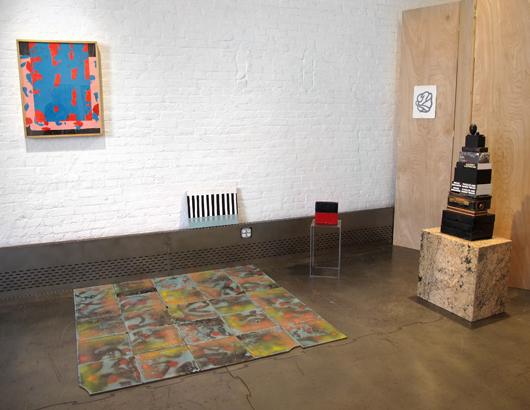 Installation view, Mondo Cane
Installation view, Mondo Cane
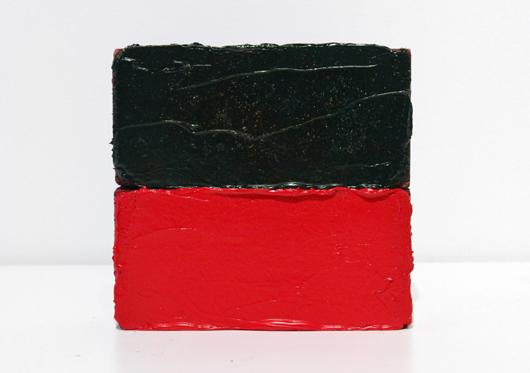 Are We Building Something, or Tearing It Down?, 2012
Are We Building Something, or Tearing It Down?, 2012
3. The tiles (above top) were dyed / painted / stacked / washed / painted / washed / etc. I had arranged them in the lot to keep the muddier center of the lot usable. It didn’t receive much sunlight back there and would stay wet for awhile after any rain. A heavy rain would pull the soil up over the tiles and partially flood the cemented area. It’s interesting to work in an environment that counteracts your efforts — a little dharma wheel, about the work and care and ritual and you let it go.
4. The title from the show comes from the bricks (above bottom). I had six of them that I had soaked in tins of antique magenta marker refill. They all had a strange, vibrant-pink color happening. They could be very messy, and I liked them. I used them in the various capacities one may use a handful of loose bricks, but they were often stacked. Early in the summer, somebody made off with four of them, and I remember upon noticing their absence asking myself, “Are we building something… ?” I recently moved apartments, and I left a most of the backyard work behind. A few things made it out, but most of it would be pretty unmanageable outside of that context.
5. The most significant piece I sourced outside of the yard: the marble table top. I found two of these in Chinatown, each maybe 16″ across, and I carried them home on the train after a late night out with friends. I had picked one up and walked half a block, and I found I couldn’t deal with leaving the other one behind. It was absurd to carry both of them. They were so heavy. I almost lost them a block away from home. I’m using one of them in the upright sculpture that serves as the only figurative gesture in the show. The disc is a wall, a pillar, and a spine giving sentience to the furniture holding earth and sky apart. It is an ouroboros, a knee and foot standing on its own head.
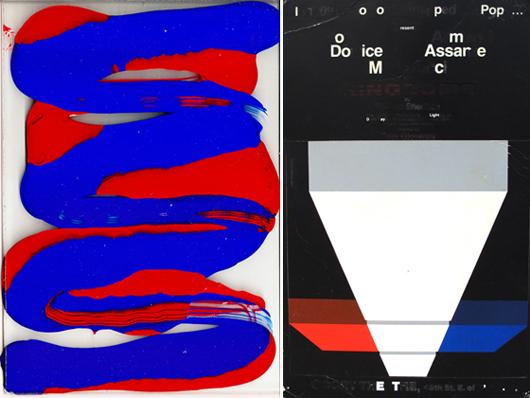 Left: Soozy #1, 2011. Right: Loo(p)op Massacre, 2012
Left: Soozy #1, 2011. Right: Loo(p)op Massacre, 2012
Five other references or inspirations one could find in the works included in the show.
1. Open symbols and infinite fill. Vessels for a strange magic.
2. We had moved here as the Occupy happenings were in full effect, and it was interesting to follow the progression of being in this new proximity to the protests. I took pictures of the books in the plastic tub library. I would draw late at night and watch live-stream footage of the events taking place just over the river. The drawings at Mondo happened then — void fills and grid breakers, watching police burn books and crush tents under red steel public art.
3. There was a squat adjacent to our building, a vacant row house, and the people there were frequently jumping fences to get in and out through the back, and my yard was often part of their route. I rarely saw them, but would notice the things they would disrupt in passing. In the dark they would stumble over my work, or prop objects on the fence to ease their climb.
A young woman broke into our apartment in the middle of the afternoon, who I assume was a resident of the squat. I was home but on the front stoop. Standing on the cellar door, using a rusted scissors, the woman cut open a window screen, opened the window, and unlocked the back entry by reaching through the bars. As I came back inside I caught her standing in my studio, holding my laptop behind her back. She said she had taken nothing else and I asked her to leave as she emptied the contents of her purse on my desk to prove it. She said that I would do the same thing if I were in her position, steal a computer.
Late some evening, I was watching a movie and was startled by the sound of shattering glass and a number of flashlights beaming through my windows. I peered out to watch fire fighters navigating the piles of debris in the adjacent yards, smashing out the windows of the squat, and throwing various things out onto the fire escape. The building had caught fire due to incense or a cigarette and some curtains, which left a gaping char-black hole in the front, exposing the second and third floors.
4. The Brooklyn summer’s strange aural mash of ice cream truck jingles.
5. An iPhone.
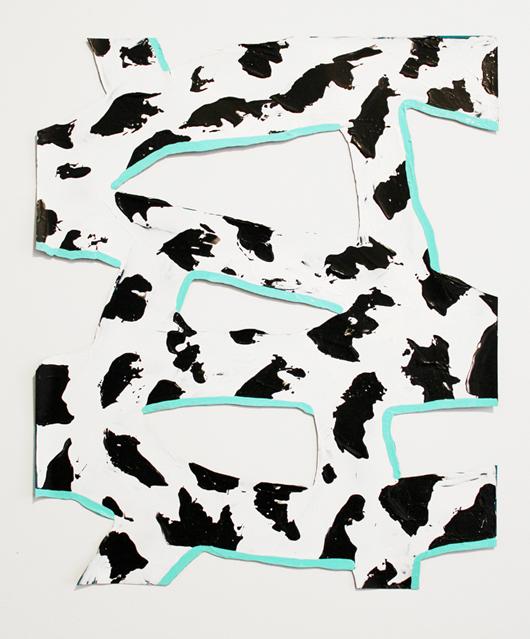
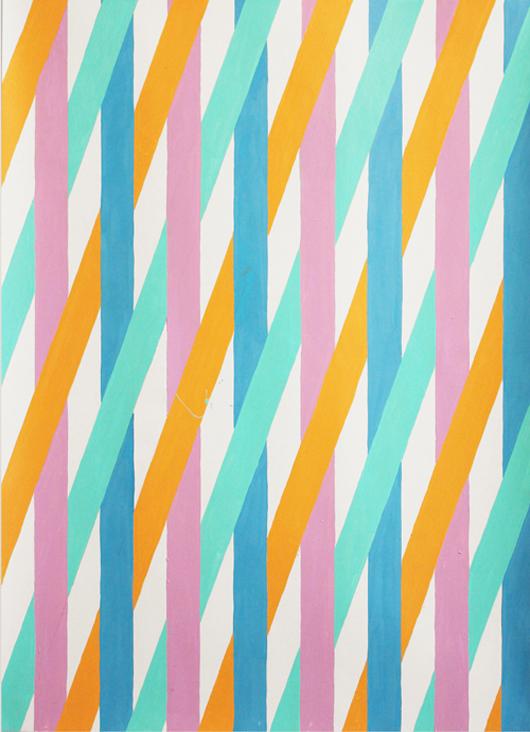 How Many Licks (Polarizing Screen), 2012
How Many Licks (Polarizing Screen), 2012
Five tools, inspiration objects, or other elements one would find in your studio that you would consider important to your practice in some way.
1. Space / brain space / a white wall
2. Pocket sketchbook
3. The internet
4. Movies / episodes / cartoons
5. Collection of miscellany: pins, knickknacks, pendants, glass, shells, blocks, rocks, etc
Five of your favorite comments you’ve ever heard or read that have been said or written about your work.
1. Gross (said endearingly)
2. It looks like the internet
3. Eric’s zen garden
4. You have a nice wall (on facebook)
5. lololololololololol
